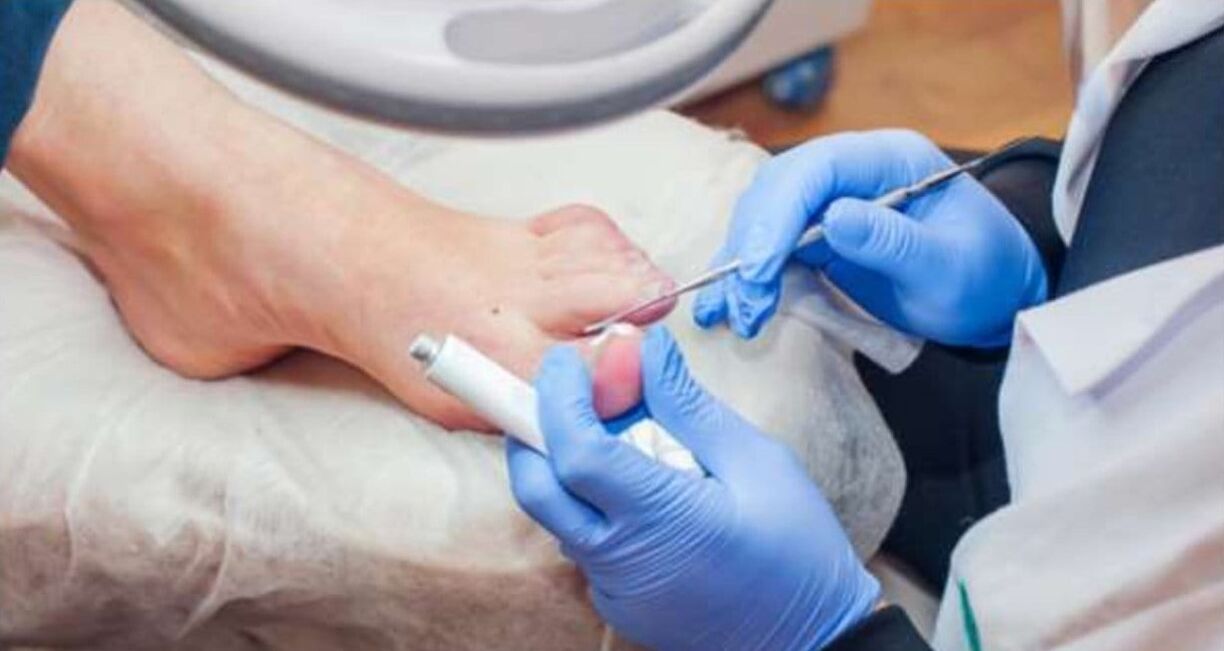Fungal diseases of the nails and feet are widespread.

Reason
Doctors divide fungal diseases of the feet and nails into two groups. The first includes diseases called epidermophytosis caused by the fungus Trichophyton interdigitale, and the second - rubrophytosis, which occurs when the fungus Trichophyton rubrum multiplies. These fungi can affect both the nail plates and the interdigital folds, soles and back of the foot.
Factors causing fungal infection:
- cracks in the interdigital wrinkles caused by sweating or dry skin, abrasion, poor drying after water procedures, narrow interigital spaces, flat feet, wearing tight shoes, etc. ;
- vascular diseases, frostbite of the extremities, working on the legs, varicose veins, decreased immunity, endocrine diseases, stress;
- professional factors - work in mining, metallurgy and chemical industries. Nail and toe fungus often affects servicemen and athletes, due to the nature of their profession.
The disease can be transmitted through close contact with the patient or the objects he uses. Bathrooms, swimming pools and other public places with high humidity are "dangerous" in terms of pollution. There are ideal "greenhouse" conditions for mushrooms: heat and humidity. In addition, the nail plate, which is almost entirely made of keratin, is an excellent breeding ground for fungi.
Once on the nail plate, the fungus grows and multiplies very slowly. Gradually dissolves the nail, replaces it and spreads to the surrounding skin.
What is happening?
With a fungal infection on the skin of the feet, the process often begins with digital wrinkles. Cracks and peeling occur in these places. Then the skin begins to redden and itch. The process often goes to the dorsum of the foot, the plantar part of the toes. Other clinical forms of fungal infection are also possible.
Nail fungus manifests itself as follows:
- Nail color: white, yellow, brown, black. The nail is dull and opaque.
- Nail surface: uneven, rough. The nail falls out.
- Nail thickness: thickening or thinning / delamination.
- Nail shape: ugly.
- Nail layer: unaltered or non-inflamed.
Significant deformation and thickening of the nails create certain difficulties when cutting them. In addition, the pressure of a thick misaligned nail on the underlying tissue (nail bed), as well as the pressure of the shoe on the nail, can often cause pain.
Diagnosis and treatment
Diagnosis and treatment of fungal diseases is carried out by a dermatologist. The doctor first sends you to an itch - to determine the type of fungus and prescribe the necessary treatment. In addition, certain medications are prescribed based on the patient's general condition and the presence of other diseases. For this reason, self-medication is ineffective and can sometimes even worsen the course of the disease.
The main danger of fungal infections in the feet is the constant development of the disease. If left untreated, the fungus can spread from one nail to another, and then to the skin or nearby areas of the nails. In rare cases, there is even damage to internal organs.
In addition, the causative agents of this disease, as very strong allergens, can restore the body's sensitivity and thus cause various types of allergic reactions.
Many patients prefer to use the widely advertised antifungal varnishes and ointments. Recall that antifungal varnishes help only in the early stages of the disease and do not affect the entire thickness of the nail - in many cases it is necessary to take drugs (tablets) inside. In addition, some creams only work on the skin without penetrating the nail. These funds are mainly intended for prevention.
Sometimes people do not go to the doctor for fear of complete removal of the nail plate. This will not happen because the deletion method is no longer used. Currently, a powerful antifungal drug is used, which, when used properly, completely eliminates the fungus.
It is important to disinfect everything that the fungus comes in contact with during and after the treatment of a fungal infection. Disinfection should be applied to floors, walls, baths, showers, bath inventory, as well as the patient's personal belongings: linen, shoes, leather and nail care items.
You can reduce the risk of fungal infections by following these tips:
- use an individual towel;
- wear individual indoor shoes;
- take a shower after the pool;
- do not wear slippers when visiting;
- Do not try barefoot shoes in the store.
























